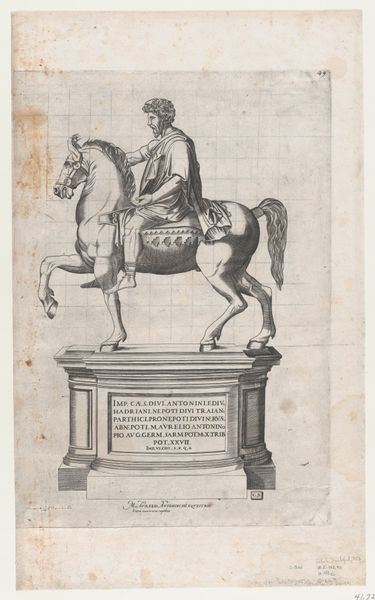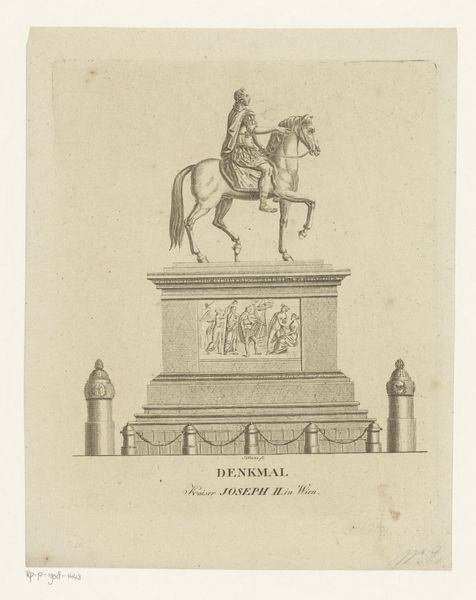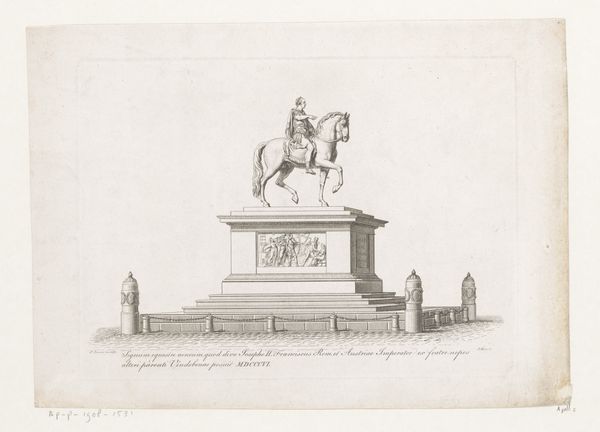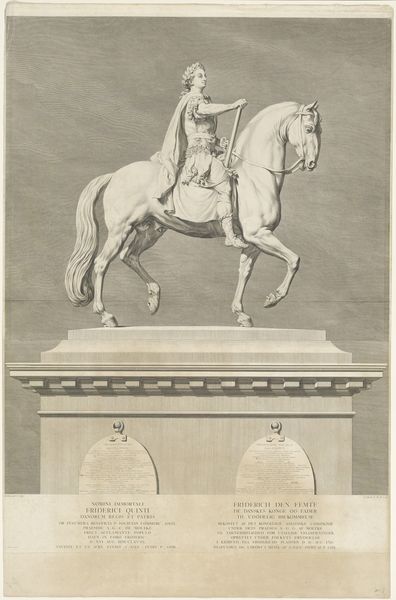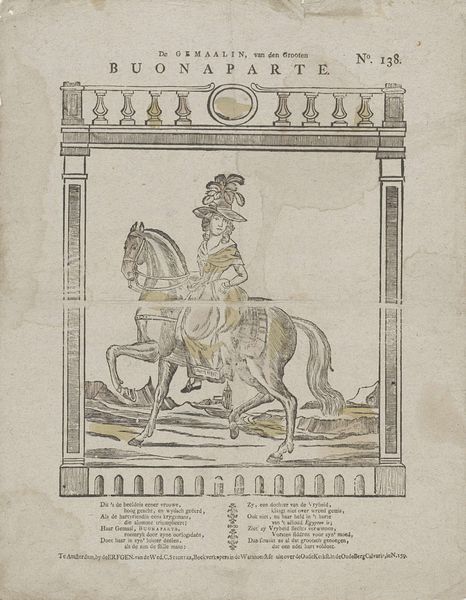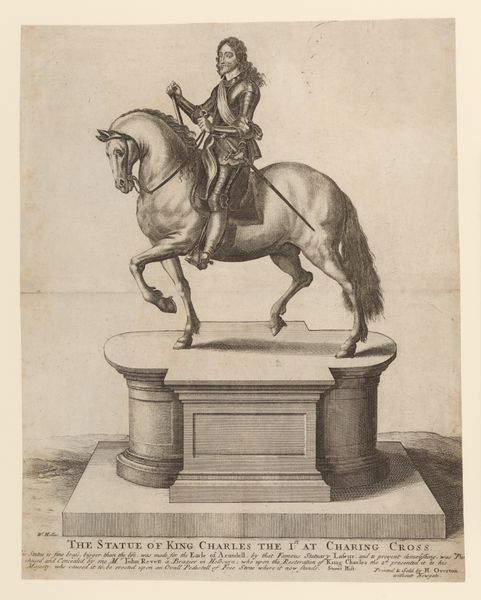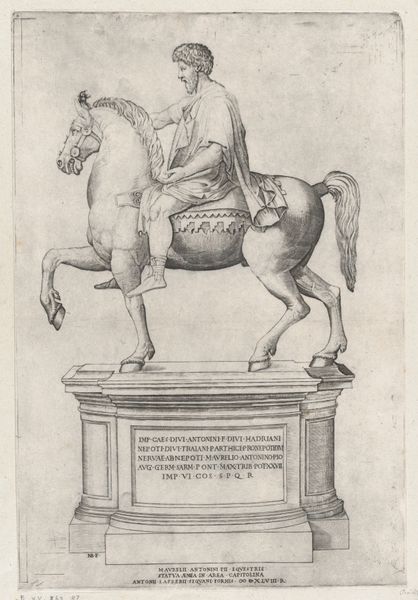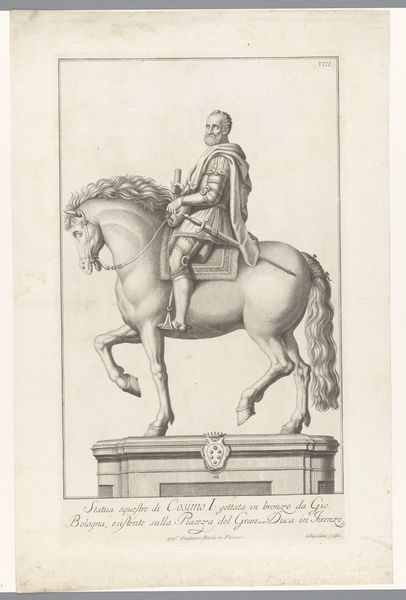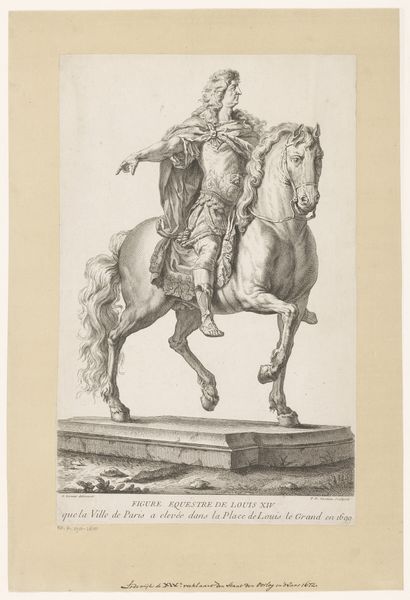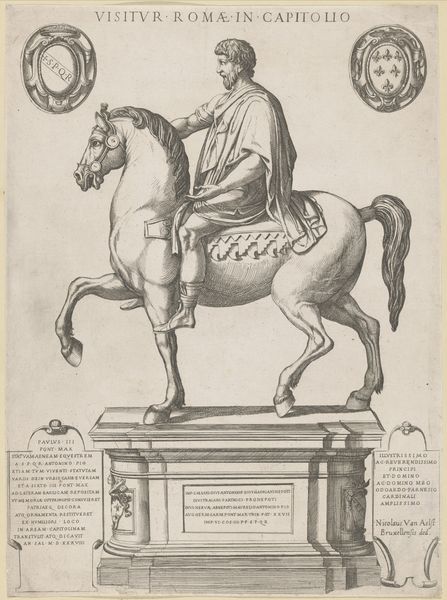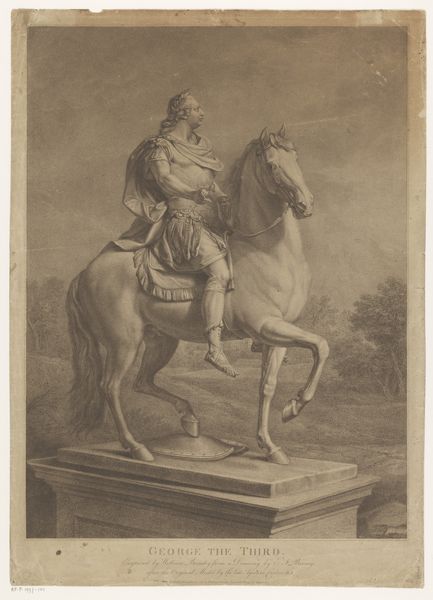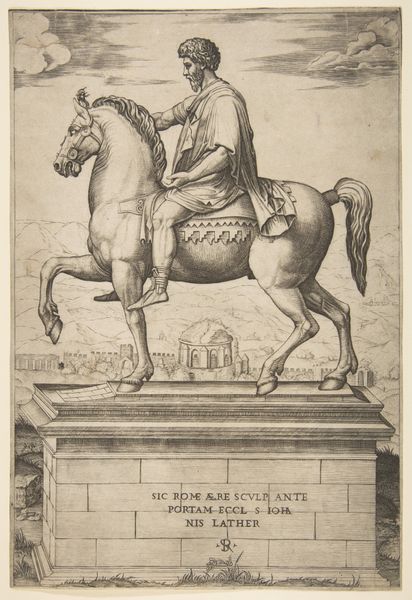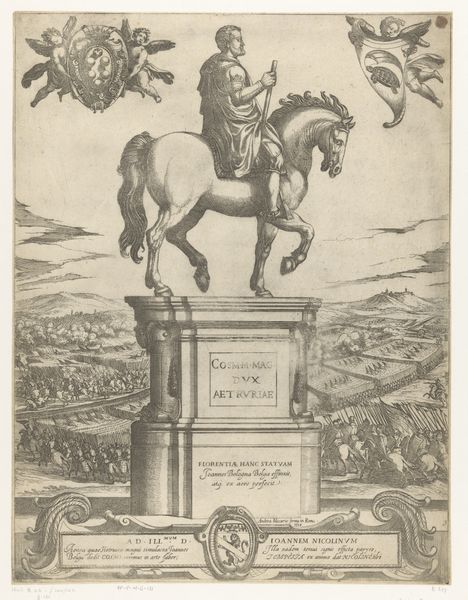
drawing, sculpture, pencil
#
drawing
#
baroque
#
sculpture
#
pencil
#
pencil work
#
history-painting
#
watercolor
Dimensions: 425 mm (height) x 320 mm (width) (bladmaal)
Editor: This is Abraham-César Lamoureux's "Udkast til Christian V's rytterstatue," a pencil and watercolor drawing created between 1686 and 1690. It’s currently held at the SMK in Copenhagen. The drawing presents a multi-tiered pedestal topped by Christian V atop a regal horse. I notice the draftsmanship and relative balance of positive and negative space, however the bottom black box and linear guidelines break the illusion of this object as a real structure. What elements do you see in terms of pure form and composition? Curator: Precisely. Focusing on the formal elements, we see a strong emphasis on hierarchical organization. The drawing presents several geometric levels: The elaborate base moves to the plain center, which supports the idealized equestrian statue, drawing our gaze upwards to the apex—the king. Observe also the artist's use of line, shadow, and subtle application of watercolor. What impression do they leave you with when divorced from their mimetic function? Editor: I’m struck by the contrast in rendering. The base is rendered more realistically and darker, whereas the king atop the horse appear paler, more ideal, as if farther away and closer to divinity. But the horse's form appears stocky, almost disproportionate, set atop this elaborated pedestal, particularly when noting the guidelines which create the artificiality. Does that impact your interpretation of the intended statue’s final design? Curator: It does, and it points us to an essential element of artistic conception. It is vital to remember that Lamoureux, by using contrasting form, line, and shade to establish hierarchical depth within his visual framework, suggests more than just the mere presence of Christian V. By fracturing his artistic expression through proportion, rendering, and depth, Lamoureux has produced a sophisticated comment regarding divine authority and corporeal rule. How does understanding the symbolic implications through such formal assessment deepen your appreciation? Editor: By decoupling the sculpture from its contextual meaning, focusing solely on how it communicates through form and proportion, I’ve managed to view it from another perspective that I would otherwise overlook. Thanks so much for this detailed observation and instruction in decoding its intended presentation! Curator: Indeed. It’s in recognizing these inherent tensions within the formal properties that we can develop a richer dialogue with any work of art.
Comments
No comments
Be the first to comment and join the conversation on the ultimate creative platform.
